Peter J Harper
age ~38
from Beaver Falls, PA
Peter Harper Phones & Addresses
- Beaver Falls, PA
- 1000 6Th St APT 2, Beaver, PA 15009
- Gurnee, IL
- Silver Lake, WI
- Volo, IL
Isbn (Books And Publications)





The Natural Garden Book : A Holistic Approach to Gardening
view sourceAuthor
Peter Harper
ISBN #
0671743236

The Natural Garden Book: A Holistic Approach to Gardening
view sourceAuthor
Peter Harper
ISBN #
0671744879


Medicine Doctors

Peter G. Harper
view sourceSpecialties:
Family Medicine
Work:
University Minnesota PhysiciansUniversity Of Minnesota Physicians Smileys Clinic
2020 E 28 St STE 104, Minneapolis, MN 55407
(612)3330770 (phone), (612)3714590 (fax)
2020 E 28 St STE 104, Minneapolis, MN 55407
(612)3330770 (phone), (612)3714590 (fax)
Education:
Medical School
Case Western Reserve University School of Medicine
Graduated: 1982
Case Western Reserve University School of Medicine
Graduated: 1982
Procedures:
Allergen Immunotherapy
Arthrocentesis
Destruction of Benign/Premalignant Skin Lesions
Electrocardiogram (EKG or ECG)
Hearing Evaluation
Psychological and Neuropsychological Tests
Skin Tags Removal
Vaccine Administration
Arthrocentesis
Destruction of Benign/Premalignant Skin Lesions
Electrocardiogram (EKG or ECG)
Hearing Evaluation
Psychological and Neuropsychological Tests
Skin Tags Removal
Vaccine Administration
Conditions:
Acne
Acute Pharyngitis
Allergic Rhinitis
Anemia
Anxiety Phobic Disorders
Acute Pharyngitis
Allergic Rhinitis
Anemia
Anxiety Phobic Disorders
Languages:
English
Spanish
Spanish
Description:
Dr. Harper graduated from the Case Western Reserve University School of Medicine in 1982. He works in Minneapolis, MN and specializes in Family Medicine. Dr. Harper is affiliated with University Of Minnesota Masonic Childrens Hospital and University Of Minnesota Medical Center East Bank.

Peter G Harper
view sourceSpecialties:
Family Medicine
Radiology
Radiology
Education:
Case Western Reserve University(1982)
Wikipedia References

Peter Harper (American Artist)

Peter Harper (Cricketer)

Peter Harper (Musician)
Us Patents
-
Adjustable Temperature Variable Output Signal Circuit
view source -
US Patent:49470574, Aug 7, 1990
-
Filed:May 1, 1989
-
Appl. No.:7/345815
-
Inventors:Walter S. Czarnocki - Schaumburg IL
Peter W. Harper - Crystal Lake IL
Kevin S. Moran - Algonquin IL
Steven W. Alexander - Schaumburg IL -
Assignee:Motorola, Inc. - Schaumburg IL
-
International Classification:H01L 2716
-
US Classification:307310
-
Abstract:A mass fluid flow sensor is disclosed which utilizes a sensing bridge circuit to develop a sense (control) signal related to fluid flow. A fluid temperature variable resistor, separate from said bridge circuit, is utilized to implement temperature compensation so that a desired output signal is a function of sensed fluid flow, but is less dependent on fluid temperature than the sense (control) signal provided by the bridge circuit. A resistor in the bridge circuit is selected such that the sense (control) signal provided by the bridge circuit has a rate of change as a function of flow rate substantially independent of fluid temperature, but this sense signal still varies as a function of fluid temperature. This permits fluid temperature compensation of the bridge sense signal in a noncomplex and cost effective manner. An improved adjustable circuit (36-41) is provided for producing a desired temperature variable output signal (V. sub. os).
-
Mass Fluid Flow Sensor
view source -
US Patent:48541672, Aug 8, 1989
-
Filed:Sep 9, 1987
-
Appl. No.:7/094953
-
Inventors:Walter S. Czarnocki - Schaumburg IL
Peter W. Harper - Crystal Lake IL
Kevin S. Moran - Algonquin IL
Steven W. Alexander - Schaumburg IL -
Assignee:Motorola Inc. - Schaumburg IL
-
International Classification:G01F 168
-
US Classification:7320419
-
Abstract:A mass fluid flow sensor is disclosed which utilizes a sensing bridge circuit to develop a sense (control) signal related to fluid flow. A fluid temperature variable resistor, separate from said bridge circuit, is utilized to implement temperature compensation so that a desired output signal is a function of sensed fluid flow, but is less dependent on fluid temperature than the sense (control) signal provided by the bridge circuit. A resistor in the bridge circuit is selected such that the sense (control) signal provided by the bridge circuit has a rate of change as a function of flow rate substantially independent of fluid temperature, but this sense signal still varies as a function of fluid temperature. This permits fluid temperature compensation of the bridge sense signal in a noncomplex and cost effective manner.
Lawyers & Attorneys

Peter Harper - Lawyer
view sourceSpecialties:
Criminal
ISLN:
922111083
Admitted:
1988
Law School:
University of New South Wales, LL.B.
Resumes

Founder And Chief Executive Officer
view sourceIndustry:
Restaurants
Work:
Brownstone Inn 2012 - 2013
General Manager
Harper's 2012 - 2013
Founder and Chief Executive Officer
Brownstone Inn 2011 - 2012
Assistant Manager
Brady's Bar & Grill 2009 - 2011
Head Bartender
Brady's Bar & Grill 2008 - 2008
Assistant Bar Manager
General Manager
Harper's 2012 - 2013
Founder and Chief Executive Officer
Brownstone Inn 2011 - 2012
Assistant Manager
Brady's Bar & Grill 2009 - 2011
Head Bartender
Brady's Bar & Grill 2008 - 2008
Assistant Bar Manager

Peter Harper
view sourceSkills:
Customer Relations

Peter Harper
view source
Peter Harper
view source
Peter Harper
view sourceMyspace
Googleplus

Peter Harper
Work:
California State University Channel Islands - Lecturer (2007)
Education:
New York University - MA in Art, Pitzer College - BA Political Studies
About:
I think I am the Only Peter Harper who can paint, draw, sculpt AND sing.
Tagline:
There is nothing better than ones own truth expressed through artistic endeavors
Bragging Rights:
Braging is for suckas... You want to know what I've done? google me.

Peter Harper
Work:
Working (2013)

Peter Harper
Education:
Balderstone Community

Peter Harper

Peter Harper

Peter Harper
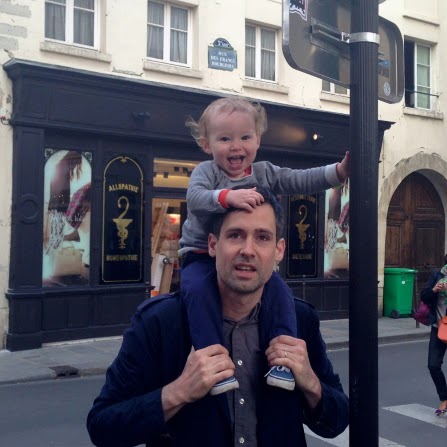
Peter Harper

Peter Harper
Flickr
Plaxo

Peter Harper
view sourceNew York, NYVP Strategic Marketing & Brand Development at Gene...

Peter Harper
view sourceCampbell River, BC

Peter Harper
view sourceBusiness Analyst at Marks & Spencer

Peter Harper
view sourceBilling Operations Analyst at AAPT

Peter Harper
view sourceGXS

Harper, Peter
view sourceBurbank, CA
Classmates

Peter Holland (Harper)
view sourceSchools:
Ceylon High School Ceylon MN 1950-1962
Community:
Jan Olson, Layton Traver, Pamela Grizzard, Brett Weir

Peter Harper
view sourceSchools:
Marengo Community High School Marengo IL 1990-1994
Community:
Sam Jones, James Regelin, Carrie Grosvenor

Peter Harper, Norcross Hi...
view source
Northbridge High School, ...
view sourceGraduates:
Dianne Miedema (1960-1964),
Brian Spratt (1966-1970),
Howard Vandersea (1955-1959),
Ernest Boudreau (1940-1944),
Peter Harper (1986-1990)
Brian Spratt (1966-1970),
Howard Vandersea (1955-1959),
Ernest Boudreau (1940-1944),
Peter Harper (1986-1990)

Holman Middle School, St....
view sourceGraduates:
Greg Smith (1990-1991),
Peter Harper (2001-2005),
Penny Kalb (1967-1971),
Andrea Lynch (1988-1992)
Peter Harper (2001-2005),
Penny Kalb (1967-1971),
Andrea Lynch (1988-1992)

San Francisco Art Institu...
view sourceGraduates:
Peter Harper (1996-1997),
Saeed Shafa (1976-1978),
Mark Anthony (1991-1995),
Anne Sheridan (1973-1976),
Jeffrey Meyer (1991-1993)
Saeed Shafa (1976-1978),
Mark Anthony (1991-1995),
Anne Sheridan (1973-1976),
Jeffrey Meyer (1991-1993)

Syracuse University, Syra...
view sourceGraduates:
Peter Harper (1966-1970),
Christine Desrochers (1988-1992),
Tara Vantassell (2004-2008),
Lori Palmer (1984-1986)
Christine Desrochers (1988-1992),
Tara Vantassell (2004-2008),
Lori Palmer (1984-1986)
Youtube
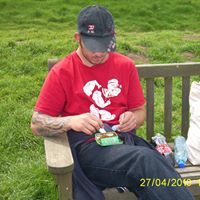
Harper Peter
view source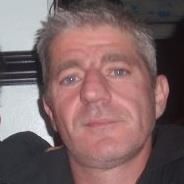
Peter Lizzie Harper
view source
Pete Harper
view source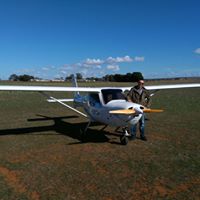
Laeth Peter Harper
view source
Peter Harper
view source
Peter Harper
view source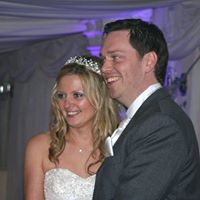
Peter Harper
view source
Peter Harper
view sourceGet Report for Peter J Harper from Beaver Falls, PA, age ~38














![Peter Harper on Zero Carbon Britain [1/2] Peter Harper on Zero Carbon Britain [1/2]](https://i.ytimg.com/vi/3UKLpDfx4T8/0.jpg)
